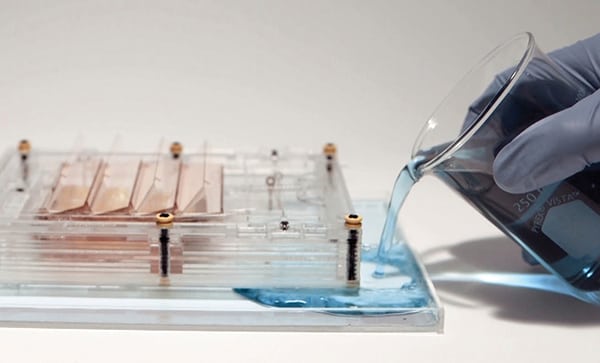The Emergence of Evaporation Energy
Dr. Ozgur Sahin, an associate professor of biological sciences and physics at Columbia University, who has helped develop a floating, piston-driven engine that generates power, most succinctly describes the impetus that makes it work: “Evaporation is a fundamental force of nature,” he said. “It’s everywhere, and it’s more powerful than other forces like wind and waves.”
Sahin, who is the lead author of a paper published in the online June 16 issue of Nature Communications, last year found that when bacterial spores shrink and swell with changing humidity, they can exert force. Sahin, who reported the finding in a paper published in Nature Nanotechnology, said they pack more energy, pound for pound, than other materials used in engineering for moving objects.
That finding led researchers at Columbia University to develop devices that could be powered by the force of swelling bacteria spores. Along with the piston-driven engine, they created a rotary engine that drives a miniature car.
The piston-driven engine consists of thin, double-sided plastic tape onto which spores are glued on both sides. On one side of the tape, the spores are glued in a dashed line, and on the other sides, the line is offset so that it overlaps with the gaps on the other side. When dry air shrinks the spores, the spore-covered dashes curve, transforming the tape from straight to wavy, shortening the tape, and pulling whatever it might be attached to, the researchers explained. When the humidity expands the spores, the tape extends, releasing force. It works akin to an artificial muscle that is dependent on the changing humidity.
Dozens of these tapes placed side by side make up a stronger artificial muscle that can then be placed inside a floating plastic case topped with shutters (Figure 4). Inside the case, evaporating water makes the air humid, and the humidity causes the muscle to elongate, opening the shutters and allowing the air to dry out. When the humidity escapes, the spores shrink and the tape contracts, pulling the shutters closed and allowing humidity to build again. The spore-covered artificial muscles function as an evaporation-driven piston, and coupling that piston to a generator produced enough electricity to cause a small light to flash. “When we placed water beneath the device, it suddenly came to life, moving on its own,” Xi Chen, a postdoctoral fellow working on the project, said.
The researchers say that with its current power output, the floating evaporation engine could supply small floating lights or sensors at the ocean floor that monitor the environment. With evaporation energy scaled up, however, they predict that it could one day produce power from a giant plant that floats on a bay or a reservoir.
—Sonal Patel is a POWER associate editor.
